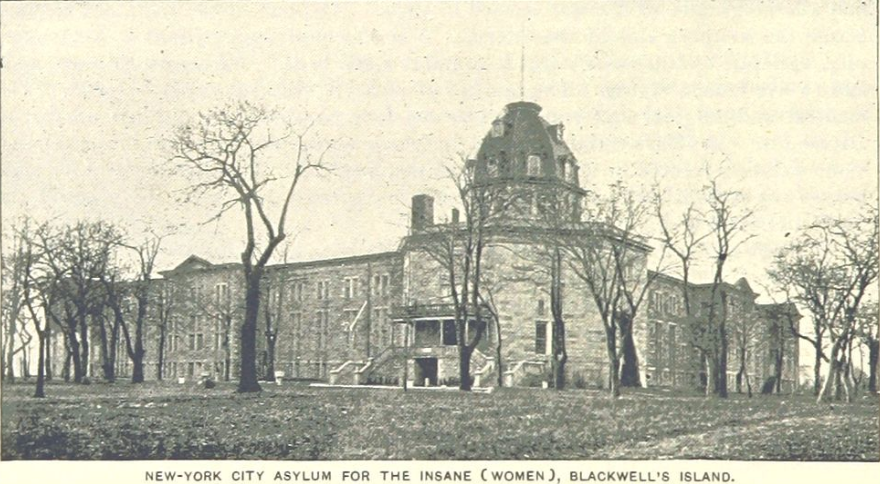"Blackwell's, Ward's and Randall's islands and adjacent shores of East and Harlem rivers from 51st St. New York to Lawrence's Pt."(Hergesheimer, Library of Congress)


(“New York City Asylum For The Insane [Women], Blackwell's Island,” Asylum Projects)
"The insane asylum is a human rat trap. It is easier to get in, but once there, it is impossible to leave."
~ Nellie Bly, "Ten Days in a Mad-House"
In 1828, New York City bought an island in the East River from the Blackwell family. On the island, they built a jail and an asylum. The asylum, opened in 1839, was New York’s first publicly-funded mental hospital and the first public mental hospital in the United States (Boardman).
"Blackwell's, Ward's and Randall's islands and adjacent shores of East and Harlem rivers from 51st St. New York to Lawrence's Pt."(Hergesheimer, Library of Congress)
Because of financial restrictions, only two wings were ever built in Blackwell; this immediately proved to be an ineffective way of running the asylum due to the sheer number of insane people. Prisoners from the nearby jail were used as guards and attendants. The unqualified care of the patients led to horrible mistreatment and awful conditions. Many people fell ill or passed away due to a lack of funds and resources (Boardman).
Thousands of the city’s mentally ill were committed to the asylum between 1839 and 1895, and the press’s infatuation with the institution grew intense during those years. Local newspapers had weekly stories of the asylum’s most interesting characters. By 1893 patients were being moved from Blackwell's to Ward’s Island. In 1894, Blackwell’s Asylum was shut down for good. The building turned to traditional medical care, later becoming the Metropolitan Hospital (Boys, Bowery).
"Panorama of Blackwell's Island, N.Y. 1903. This film was photographed from a boat heading south along the eastern shore of Blackwell's Island (known today as Roosevelt Island). The island lies in the East River, between Manhattan (which can be seen in the background) and Long Island City, Queens. It is approximately one and three-quarters of a mile long, extending from 51st Street to 88th, and at the time of the filming was the location for a number of New York City's charitable and penal institutions." (Porter, Library of Congress)